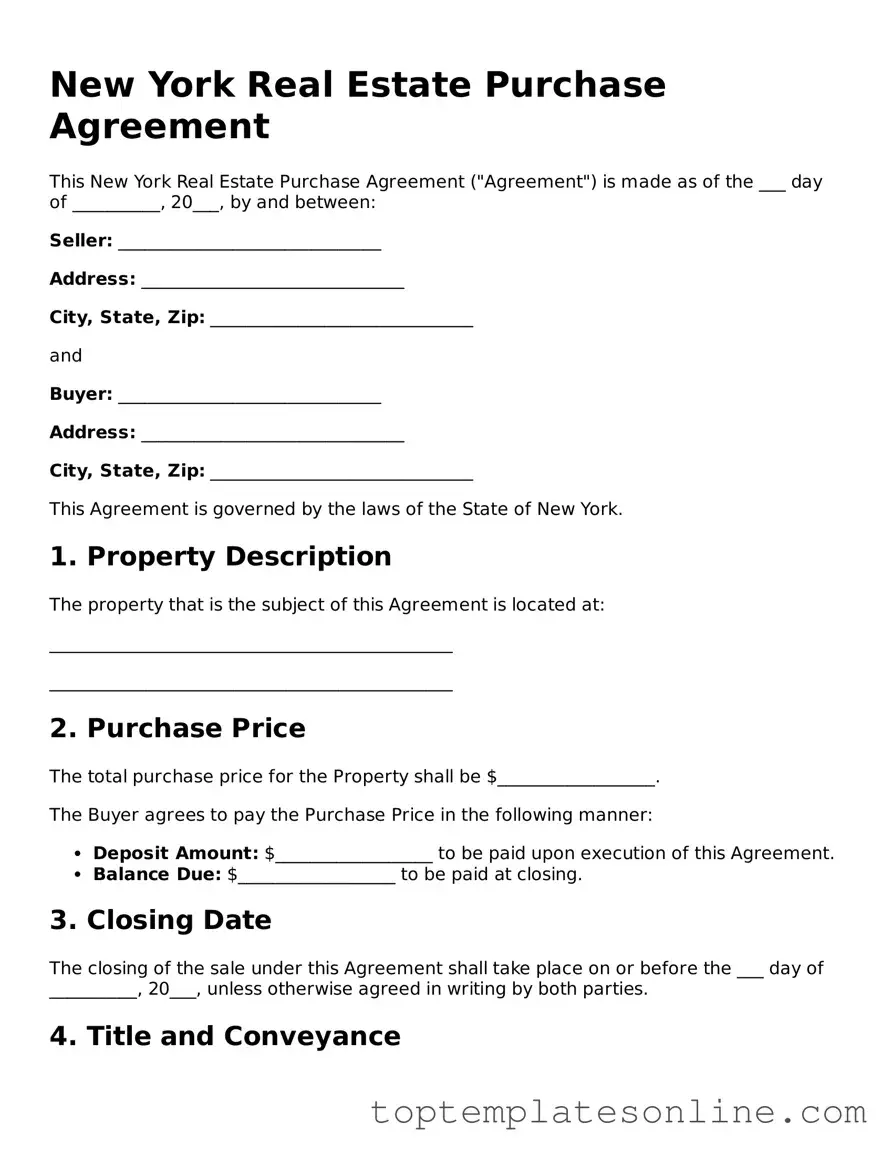Blank Real Estate Purchase Agreement Template for New York State
The New York Real Estate Purchase Agreement is a legal document that outlines the terms and conditions under which a property will be sold. This form serves as a binding contract between the buyer and seller, detailing essential information such as the purchase price, property description, and contingencies. Understanding this agreement is crucial for anyone involved in a real estate transaction in New York.
Customize Real Estate Purchase Agreement Here
